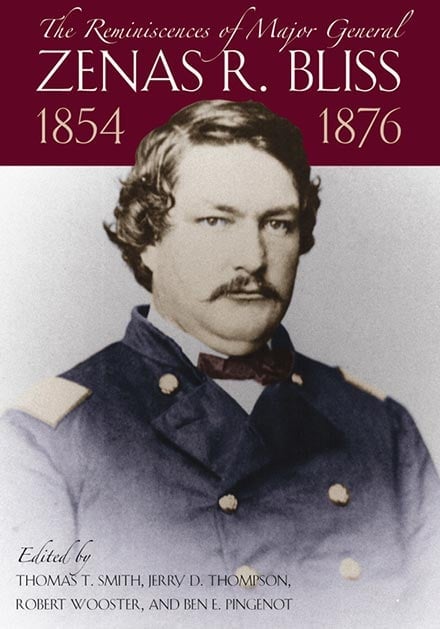In 1862 the Confederacy located a conscript-training camp four miles northeast of Tyler. The installation became known as Camp Ford, in honor of Col. John S. (Rip) Ford. On July 21, 1863, the Trans-Mississippi Department ordered the establishment of a prison camp at Camp Ford and transferred the prisoners of war then located at Shreveport, Louisiana, to Tyler for confinement. These and other POWs sent to Tyler encamped in the open under guard until November 1863, when reports of a plan to escape caused alarm among the local citizenry and the Confederates in charge. Accordingly, a stockade was built enclosing an area of two to four acres. A large spring ran along the south wall of the stockade and served as a water supply for the prison camp. The prisoners were required to improvise their own shelter, which they fashioned out of logs and other primitive building materials. Until the spring of 1864, morale among the prisoners at Camp Ford was passable, and the ranking federal officers maintained a decent sense of order. Enterprising prisoners made goods for use and sale, including crude furniture, clay dishes, woven baskets, brooms, clothing, and other useful articles. Some of these were traded or sold to local citizens for food and clothes.
Living conditions at Camp Ford became deplorable in April 1864, when the population was suddenly tripled by the addition of about 3,000 prisoners captured at the defeat of the Union army in Arkansas and the battles at Mansfield and Pleasant Hill, Louisiana. The stockade area was doubled in size in an effort to accommodate this influx. The 4,725 inmates were overcrowded and critically short of food, shelter, and clothing. Their plight was desperate for several months, until major exchanges of prisoners in July and October 1864 alleviated somewhat the shocking conditions that had prevailed. For the rest of the war the Confederates encountered great difficulties in supplying adequate rations to both prisoners and guards at Camp Ford. Sometimes the standard daily pint of meal and pound of beef per prisoner was down to a quarter pound of each, depending upon the supply available to the Confederate commissary department. Beginning with the overcrowding in April 1864, the quality of the shelters deteriorated. Nearby timber was less plentiful, and shelters had to be constructed quickly. The prisoners improvised all sorts of crude shelters ranging from brush arbors to blanket tents. Some simply dug holes in the ground for protection from the cold winds. A popular form of shelter was called a "shebang," a burrow into a hillside covered by a crude A-shaped framework made of poles, sticks, and clay to protect the entrance. The majority of the prisoners required the clothes that they were wearing when captured to see them through their captivity. The acute shortage of clothing was due to a lack of manufacturing in the South and to the federal blockade. In response to a letter from the ranking Union officers at Camp Ford, at least two shipments of clothes from the United States government were received by and distributed among the prisoners.
Escapes from Camp Ford were common, but no reliable estimate of the number is available. Postwar accounts of those attempts, some successful, were abundant among the members of the former Camp Ford inmates. After the war the former prisoners leveled charges against the Confederates for mistreatment and failure to provide humane living conditions at Camp Ford. However, the published accounts present many conflicting stories and viewpoints among the former prisoners. Nothing came of the charges. About 6,000 prisoners were confined at Camp Ford over the two years of its existence, making it the largest Confederate prison camp west of the Mississippi River. Of this number, 286 died there. Following the surrender of the Confederate Trans-Mississippi Department, the 1,200 remaining prisoners left Camp Ford, on May 17, 1865, bound for Shreveport. The remains of the prison compound were destroyed in July by a detail of the Tenth Illinois Cavalry.
Is history important to you?
We need your support because we are a non-profit that relies upon contributions from our community in order to record and preserve the history of our state. Every dollar helps.
A. J. H. Duganne, Twenty Months in the Department of the Gulf (New York: J. P. Robens, 1865). B. P. Gallaway, The Dark Corner of the Confederacy (Dubuque, Iowa: Brown, 1968). Robert W. Glover, ed., Tyler and Smith County, Texas (n.p.: Walsworth, 1976). F. Lee Lawrence and Robert W. Glover, Camp Ford, C.S.A.: The Story of Union Prisoners in Texas (Austin: Texas Civil War Centennial Advisory Committee, 1964). Leon Mitchell, Jr., "Camp Ford, Confederate Military Prison," Southwestern Historical Quarterly 66 (July 1962). S. A. Swiggett, The Bright Side of Prison Life (Baltimore: Fleet, McGinley, 1897). The War of the Rebellion: A Compilation of the Official Records of the Union and Confederate Armies (Washington: GPO, 1880–1901).
The following, adapted from the Chicago Manual of Style, 15th edition, is the preferred citation for this entry.
F. Lee Lawrence,
“Camp Ford,”
Handbook of Texas Online,
accessed April 25, 2024,
https://www.tshaonline.org/handbook/entries/camp-ford.
Published by the Texas State Historical Association.
TID:
QCC15
-
Original Publication Date:
-
1952
-
Most Recent Revision Date:
-
June 1, 1995
This entry belongs to the following special projects:












